
About This Quiz
How much time do you spend thinking about your car's exhaust? Custom tips are one of the most popular mods people can buy for their cars, so a lot of drivers want to make sure their tailpipe is looking as cool as it possibly can. But sometimes you don't need to go-to aftermarket parts to get that cool look when the manufacturer rolls them right out of the factory looking as awesome as the rest of the car. And other times a car is just so popular that it's impossible you haven't been stuck in traffic behind some of these things 1,000 times already.Â
It's a true test of your passion for cars and your eye for detail if you can look at nothing but a car's exhaust and know right away what kind of vehicle we're talking about. This is the kind of thing only a car expert could pull off. But if you think you have what it takes to divine the difference between the pipes coming out the end of the 1953 Chevy Corvette as opposed to a 2017 Koenigsegg Regera or even a 1999 Toyota Corolla, then it's time for us to stop blowing smoke and for you to take the quiz!
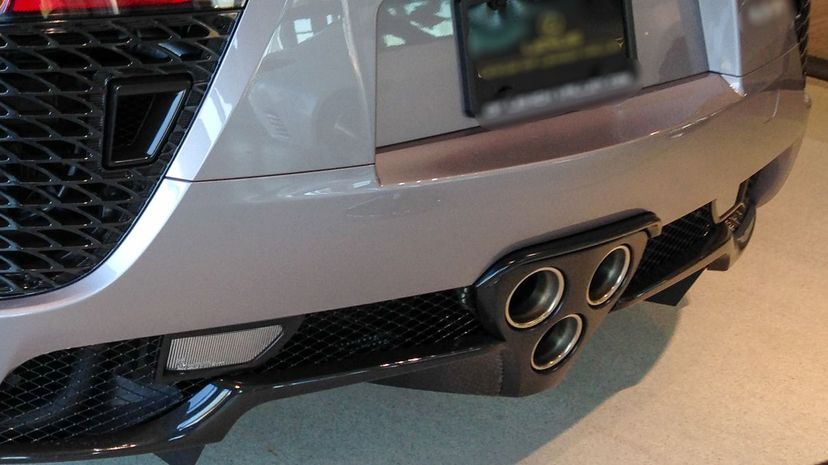
The triple pipes on the back of the Lexus LFA are very distinctive and give it a super cool and unique look. Lexus produced 500 of them over two years, and then when production ended, there was no replacement as Lexus felt the car didn't need a follow-up.

There was a time when Mercedes and McLaren had a partnership, and that's where the Mercedes-Benz SLR McLaren came from. The exhaust vented right out below the engine behind the front tire, which was just another cool and unique touch on this vehicle.
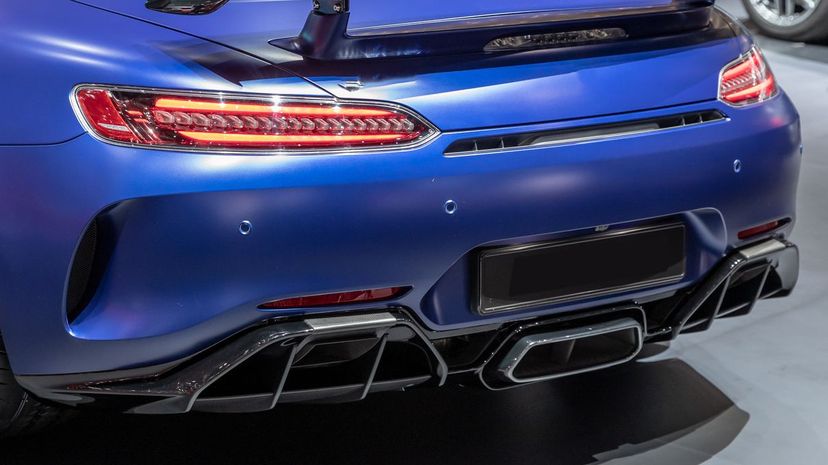
The Mercedes AMG dates back to 2014, but the GT R performance version comes from 2016, and the tail end of that car is quite something. The center exhaust port is cool and all, but it's flanked by two smaller exhaust outlets that only work when the car is in "race" mode.
Advertisement
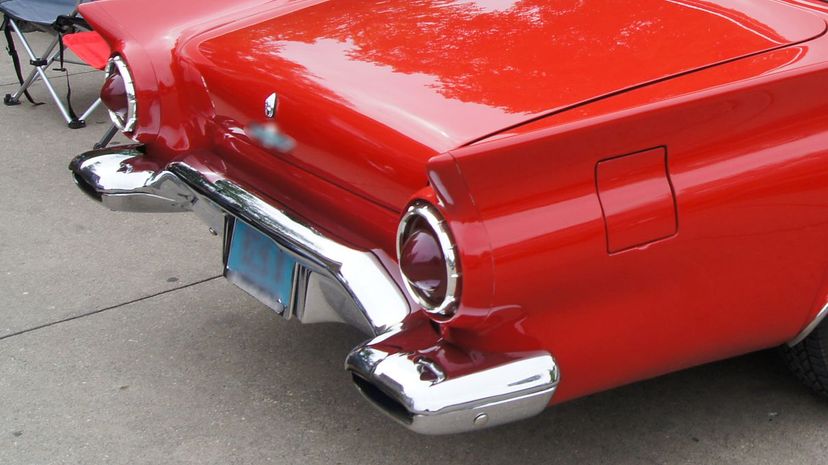
Ford has been making the Thunderbird since 1955 and kept it going for a full half-century. These early models didn't have big pipes sticking out the back. Instead, the exhaust fed right into the bumper and out of some exhaust ports.
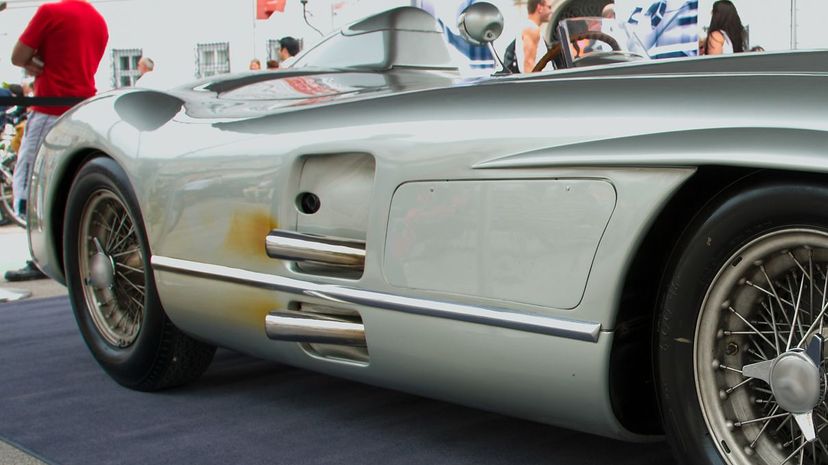
The Mercedes Benz 300 SLR was a classic and tragic car from racing history. A crash at the 1955 24 Hour of Le Mans race involving the 300 SLR sent debris into the crowd, and 83 people lost their lives, prompting Mercedes to end production.
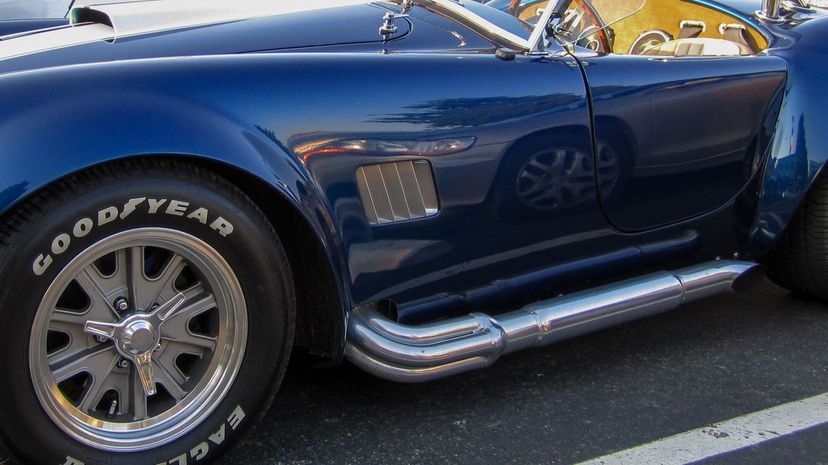
Carroll Shelby designed the Shelby Cobra, called the AC Cobra in the U.K., by putting a Ford V8 in a lightweight AC body. That big engine needed some big exhaust, which is why these pipes run out from behind that front wheel down the side of the car, giving it that extra cool look.
Advertisement
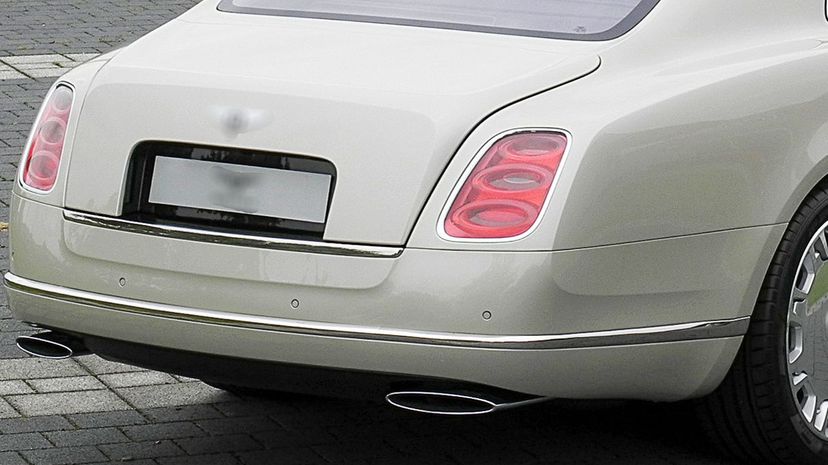
Bentley's Mulsanne has some distinct tail pipes on it that almost look like they've been sat on. The name Mulsanne comes from the Mulsanne Corner at the 24 Hours of Le Mans race, which Bentley has won several times.
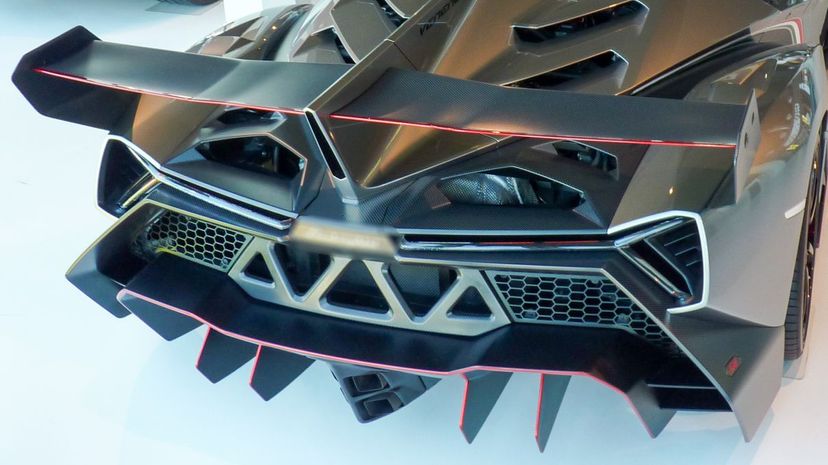
The Lamborghini Sesto Elemento means "Sixth Element," and it's not a reference to Bruce Willis movies. The sixth element on the periodic table is carbon, and the car makes liberal use of carbon fiber throughout its body, hence the name.
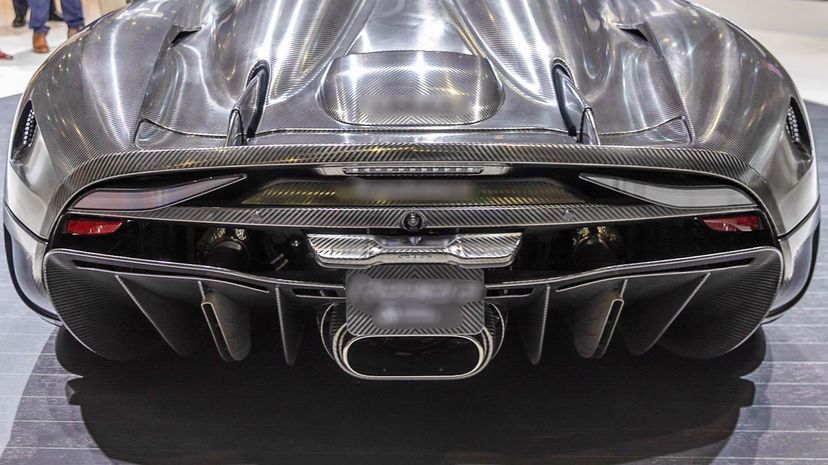
Looking at the rear of the Koenigsegg Regera, it seems obvious where the exhaust is, but it's not. The central port is a red herring: the real exhaust flanks that central port with two fins on either side of it where the real exhaust is vented.
Advertisement
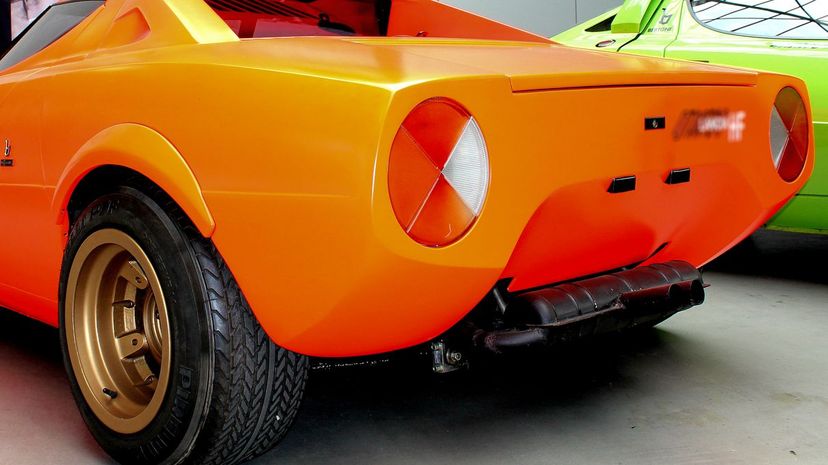
The rear of the Lancia Stratos is striking, but if you look down at the exhaust with the cross-mounted muffler, it kind of looks like a rack of aluminum bull horns. That aside, the Stratos was a performance beast and won the World Rally Championship in '74, '75 and '76.
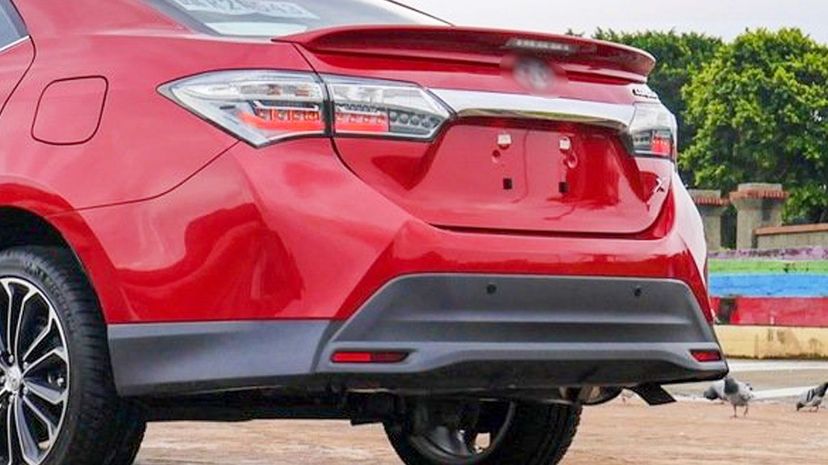
You've probably been behind these tail pipes hundreds of times on the road without paying them much mind. The Toyota Corolla is the best-selling car model of all time, with well over 44 million of them out in the world right now.
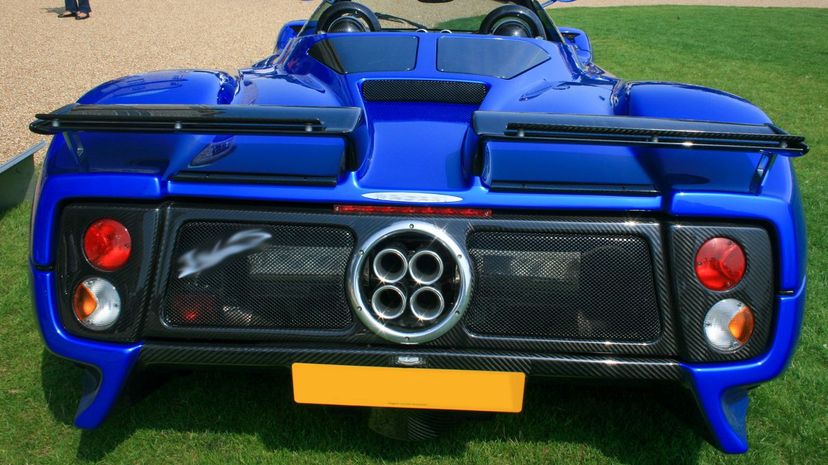
The Pagani Zonda is unmistakable from the rear with the tightly packed quarter of pipes right in the center there. The Zonda was almost named the Fangio F1 in honor of driver Juan Manuel Fangio. Sadly, Fangio died in a tragic accident, and Pagani opted for Zonda out of respect.
Advertisement
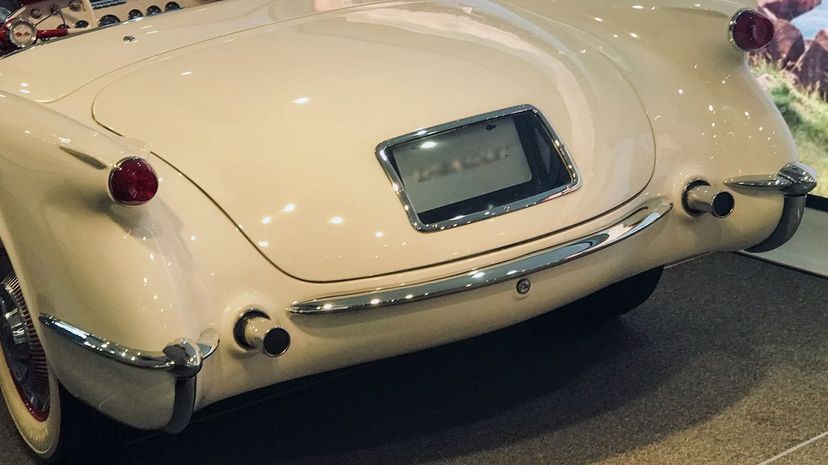
The first generation of Chevy Corvette came out in 1953, and just look at those tail pipes! Two tiny little pipes poking out of the frame gave it a very cool look. Wth over 60 years of history, it's the most popular sports car of all time.
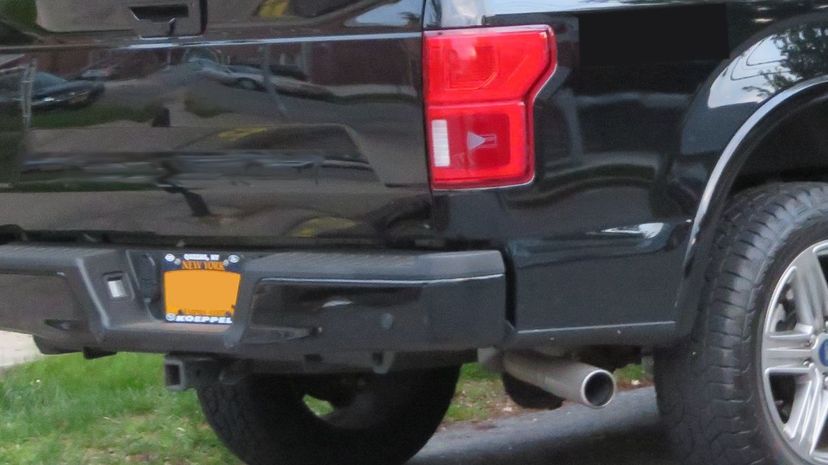
The Ford F-150 is hands down the best-selling vehicle Ford makes and has dominated the truck market since 1977 and the entire vehicle market since 1986. The F-150 is worth $41 billion per year for Ford.
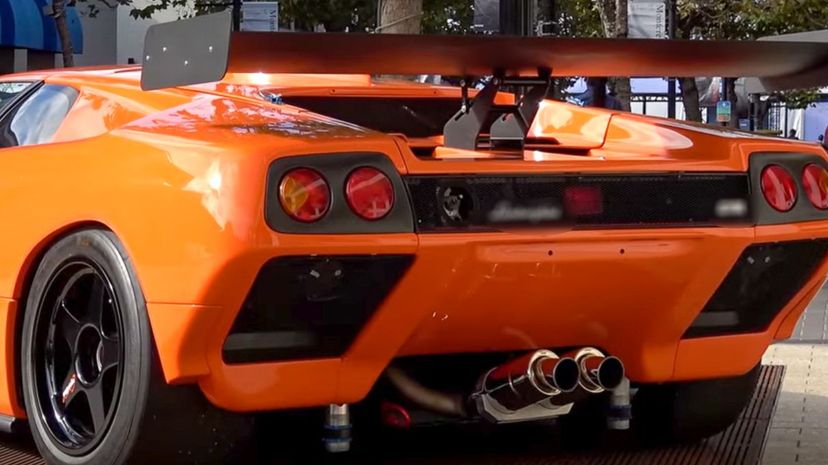
The Lamborghini Diablo began production in 1990 and ended in 2001. Just before the last hurrah, Lamborghini released the performance GTR version that was a stripped-down version with less weight and fewer amenities inside. The tail pipes dropped any pretense and just stick out as a pair of massive tips in the back.
Advertisement
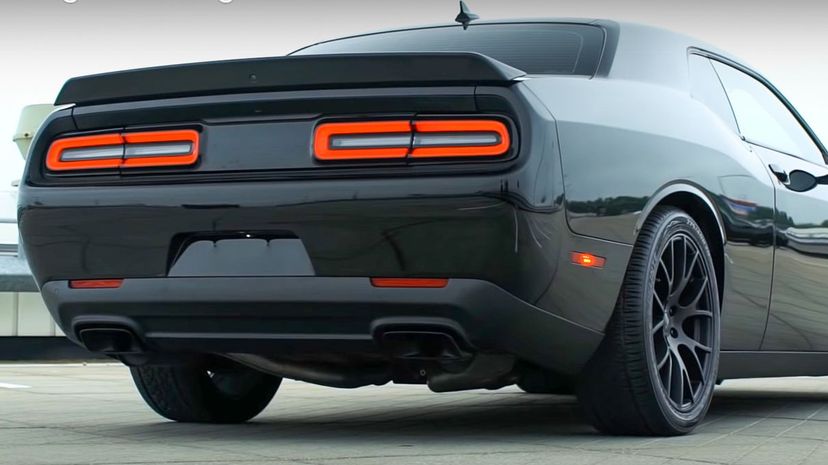
The Challenger SRT Hellcat Redeye was what Dodge rolled out to replace the Challenger Demon after its production run ended. It rocks the highway with a supercharged 6.2L V8 that produces 797 horsepower.
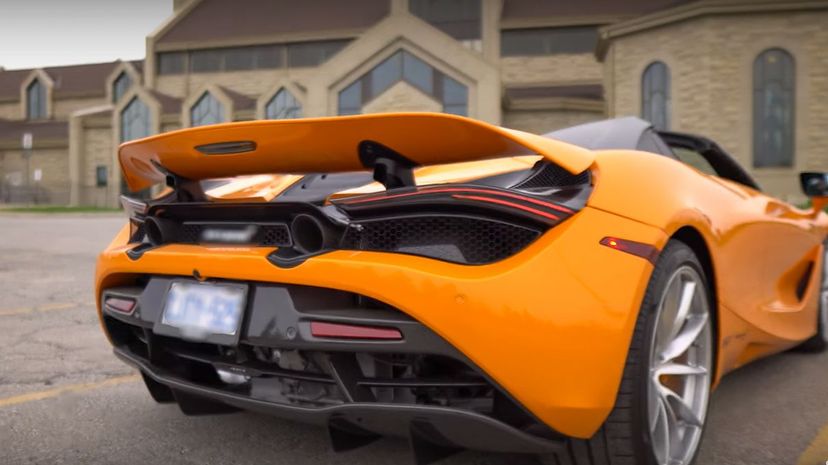
McLaren introduced the 720S in 2017 with the company's signature twin-hinged dihedral doors and an engine capable of going from 0 to 62 in just 2.9 seconds with a top speed of a blazing 212 miles per hour.

That triangle of exhaust ports is part of the McLaren Senna, named for Brazilian Formula One racer Ayrton Senna. Senna had been a driver with the McLaren team before he passed away in an accident in 1994.
Advertisement
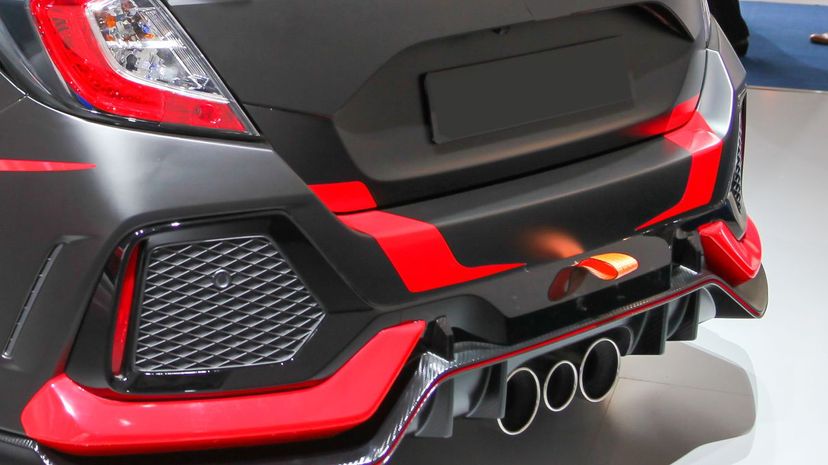
Fake exhaust tips are a common mod on cars, and even factory exhaust is sometimes made with extraneous tips for no reason. The Civic Type R looks like it might just be for show, but these three pipes were engineered specifically to manage the noise levels. At low speed, the center exhaust actually makes it louder, and at high speed, it can tone it down.
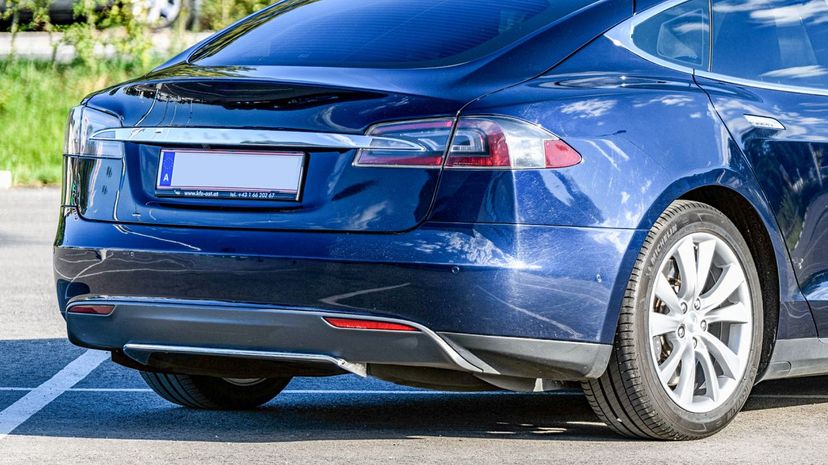
If you see a Tesla rolling down the street with tail pipes, know that they were added for no good reason (and people will actually do that). But a Tesla Model S doesn't have tail pipes because it doesn't have a combustion engine. They do have vents, just not in pipe form out the back.

The Lexus RC F has a quartet of pipes out the back that are stacked and staggered. They're all functional pipes as well, not just decorative, which makes sense since the RC F is the performance version of the car and it does haul.
Advertisement
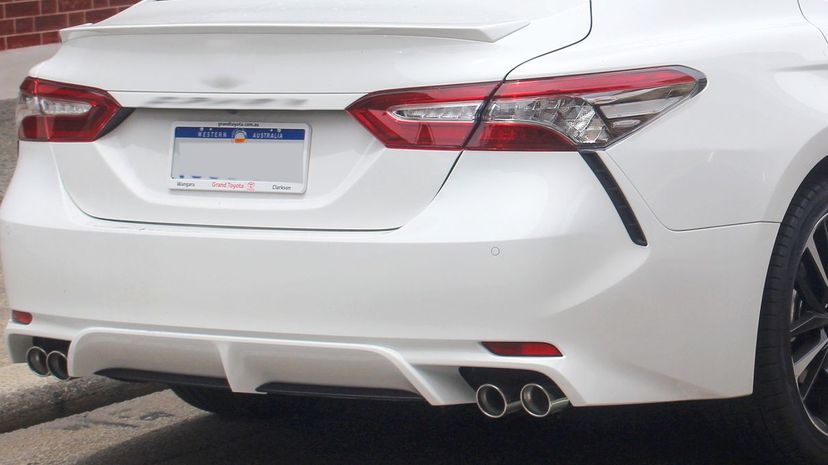
Toyota has been selling the Camry since 1982, and it took 20 years to get to the point where it became the best-selling car in America. Since 2002, it's dominated every year, often outselling the competition by more than 100,000 units or more a year.
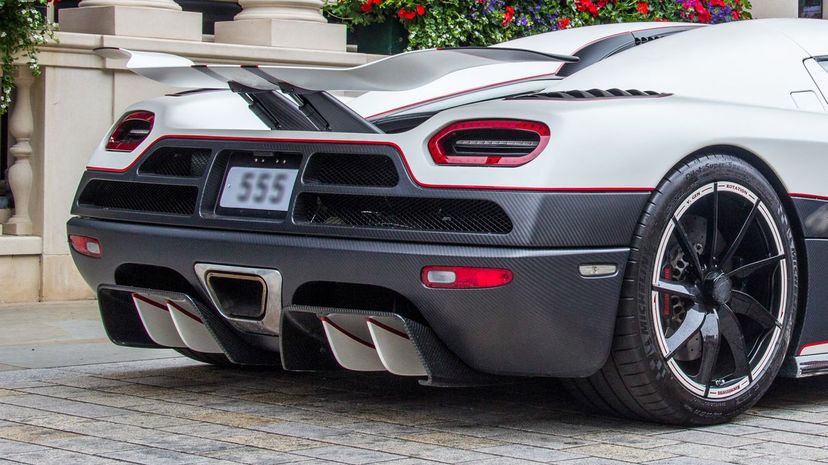
The tail pipe of the Koenigsegg Agera R looks like a portal to another place. These things are 3D printed for precision to ensure the perfect fit and function. For a car that broke six land speed records in 2011, that kind of accuracy is necessary.

The BMW M3 rocks the double double-barrel exhaust out of the back. The car ended production in 2018 after BMW was not able to alter the car in a way that would allow it to meet world emissions standards. Instead, the M4 is still in production.
Advertisement

The Jaguar E-Type V12 looks amazing from the front, and from the rear, it absolutely stands out in a crowd with that quartet of pipes. With a V12 engine that gave it a top speed of 150 miles per hour in 1961, it earned the right to go big.

The Ram 1500 in 2019 had a very understated exhaust, but you'll notice the rear fender curves ever so slightly above the pipes, making it look more form-fitted than just pipes hanging down. This is only a small part of the reason the Ram 1500 has been "Motor Trend's" Truck of the Year six times.

The rocker panels below the doors in the Dodge Viper lead to the exhaust port just before the rear tires. It's exceptionally cool to look at, but word is having the exhaust so close to the inside of the vehicle meant the temperature inside the car went up a few notches as a result.
Advertisement

The Li'l Red Express was a special edition of Dodge's D-Series of trucks in the 1970s and was hands down the coolest one. Why vent exhaust under the car when you can have massive vertical chrome pipes just behind the cabin?
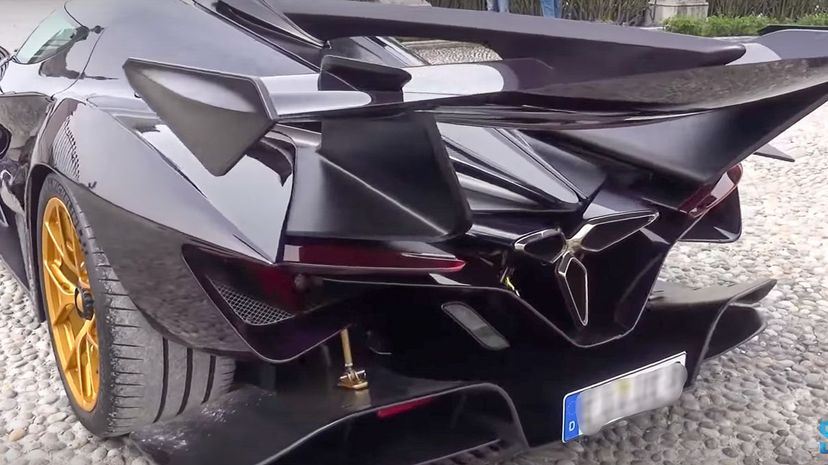
The Apollo IE is an underappreciated sports car. The name IE is short for "Intensa Emozione," which means "intense emotion" in English because ... reasons. It's made in a super limited run; they only have 10 planned, but that exhaust looks like a blooming lily, and that's pretty cool.
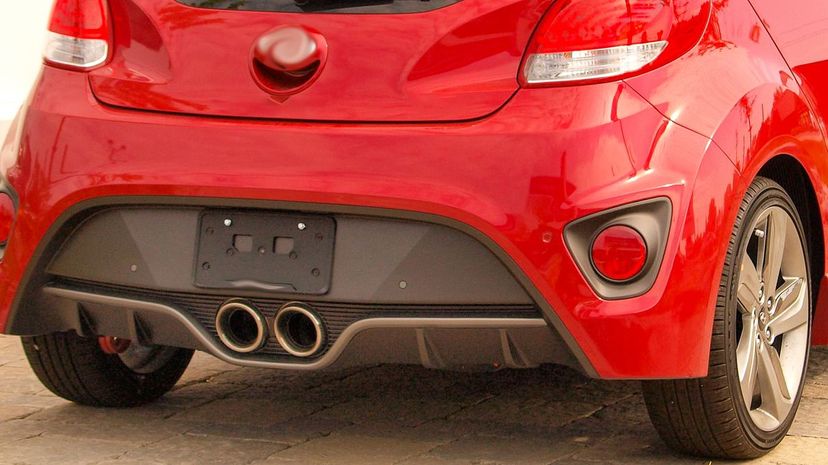
The Hyundai Veloster Turbo either looks very organized or like your hatchback has large front teeth, depending on your level of imagination. The Veloster has been in production since 2011 while the Turbo debuted a year later with a boosted performance package.
Advertisement
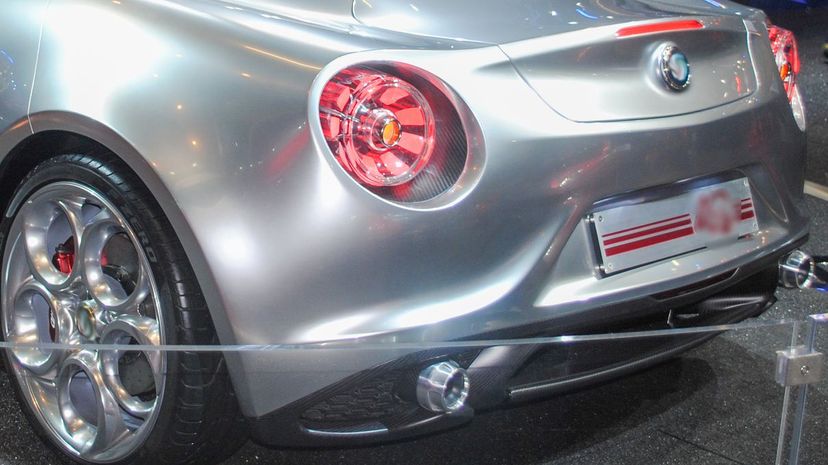
Alfa Romeo started making the 4C coupe in 2013 and the Spider in 2015. The 2020 model year features those two wide-barrel pipes right under the license plate in the center of the car (if you can catch a glimpse before it tears off at 160 miles per hour).
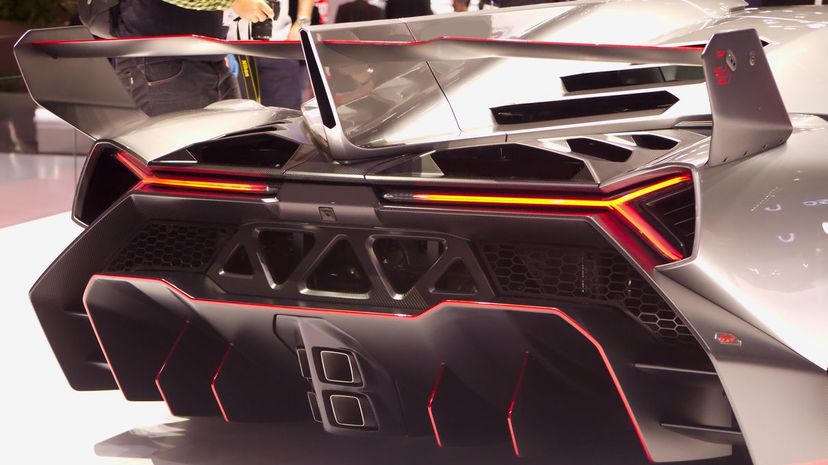
The Veneno was one of Lamborghini's more exclusive models. Only five coupes and nine roadsters were made, so if you've never been stuck in rush hour behind one of these, that's probably why. No doubt you would have remembered that crazy, geometric four-pipe puzzle in back, though.

The Nissan Nismo has been around since 1969 in one form or another and under various iterations of the name. The 2020 GT-R Nismo had a pair of dual exhausts on either side that look like James Bondian rocket launchers in back.
Advertisement
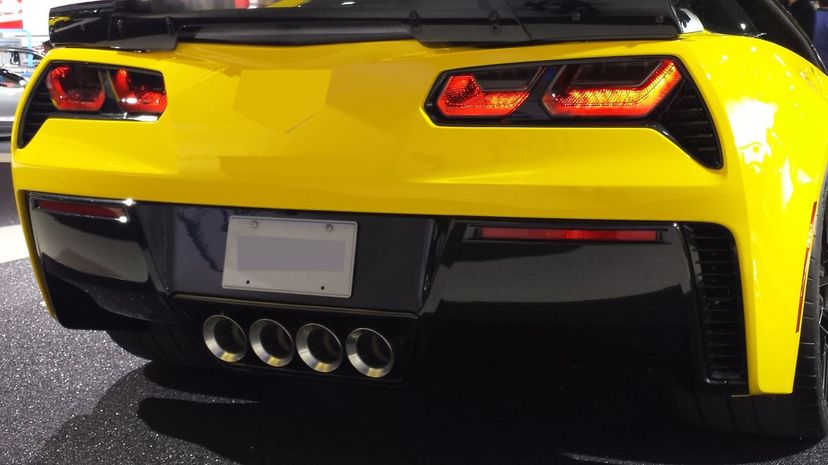
The Corvette gets some serious overhauls now and then, and by the seventh generation of the car in 2013, this is what Chevy had rolled out. An inline four-pipe symphony of exhaust pipes in the rear makes it an eye-catcher coming and going.

The Mercedes G Wagon straddles the line between luxury and utility, but those side pipe exhaust vents do make it a standout in the SUV world. It's also very long-lived and, next to the Unimog, the oldest name in the Daimler stable that's still being produced.

Fisker only made the Karma from 2011 to 2012, but you have to appreciate the unique, side-mounted exhaust ports right near the front of the car. The Karma was a plug-in hybrid, so the exhaust system didn't have to be the sort of monstrous maze of pipes like you'll see on some other cars.
Advertisement
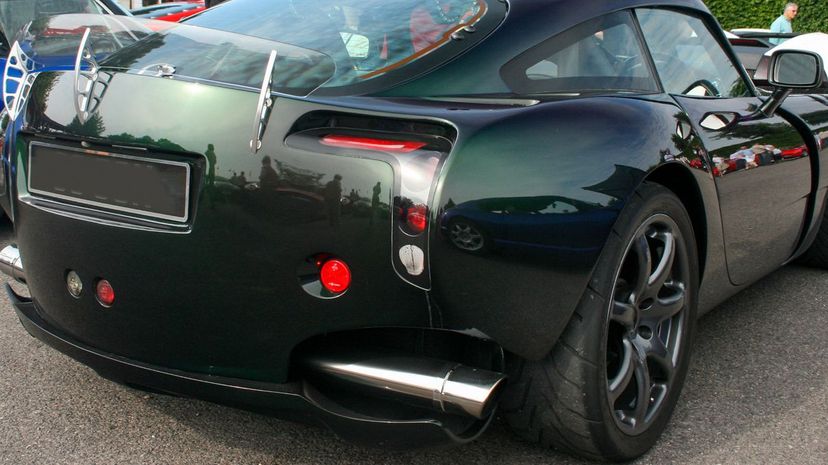
The TVR Sagaris has some eye-catching sideways exhaust pipes that only slightly make up for the complete lack of safety gear or driving aides that most cars contain. The reason? The designer felt all of those things make a driver overconfident.
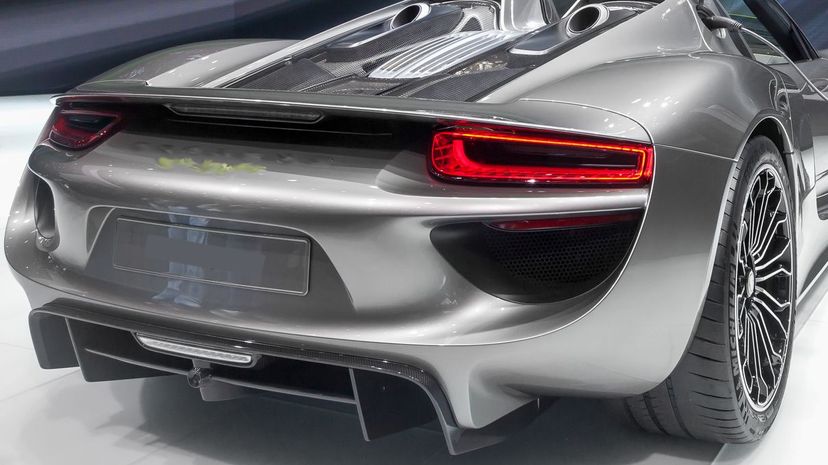
The Porsche 918 Spyder may be the coolest-looking vehicles ever made in terms of exhaust placement. Located mid-rear on the roof, the 918 Spyder looks like it's right out of "Star Wars." Only 918 of these were ever made.

The Ferrari F40 is rocking a triple exhaust system, which it needed back in 1987 to vent the scorching heat from that high-performance engine that helped it hit about 200 miles per hour. The retail price when it debuted was a modest $400,000.
Advertisement
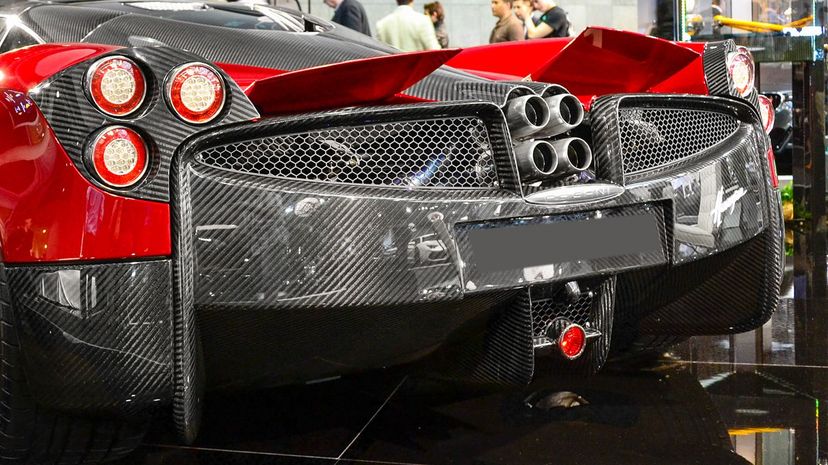
The body of the Pagani Huayra is modern to go around the top two of those four exhaust pipes, which is a cool stylistic touch. If you're curious about the name, the word "Huayra" comes from Huayra-tata, a Quechua god of wind. Nice.